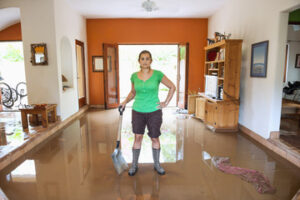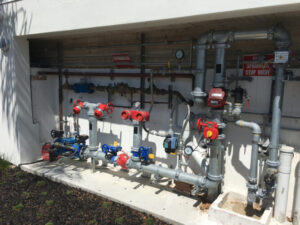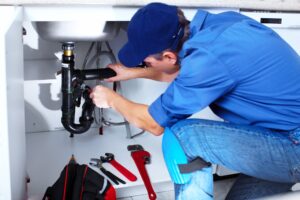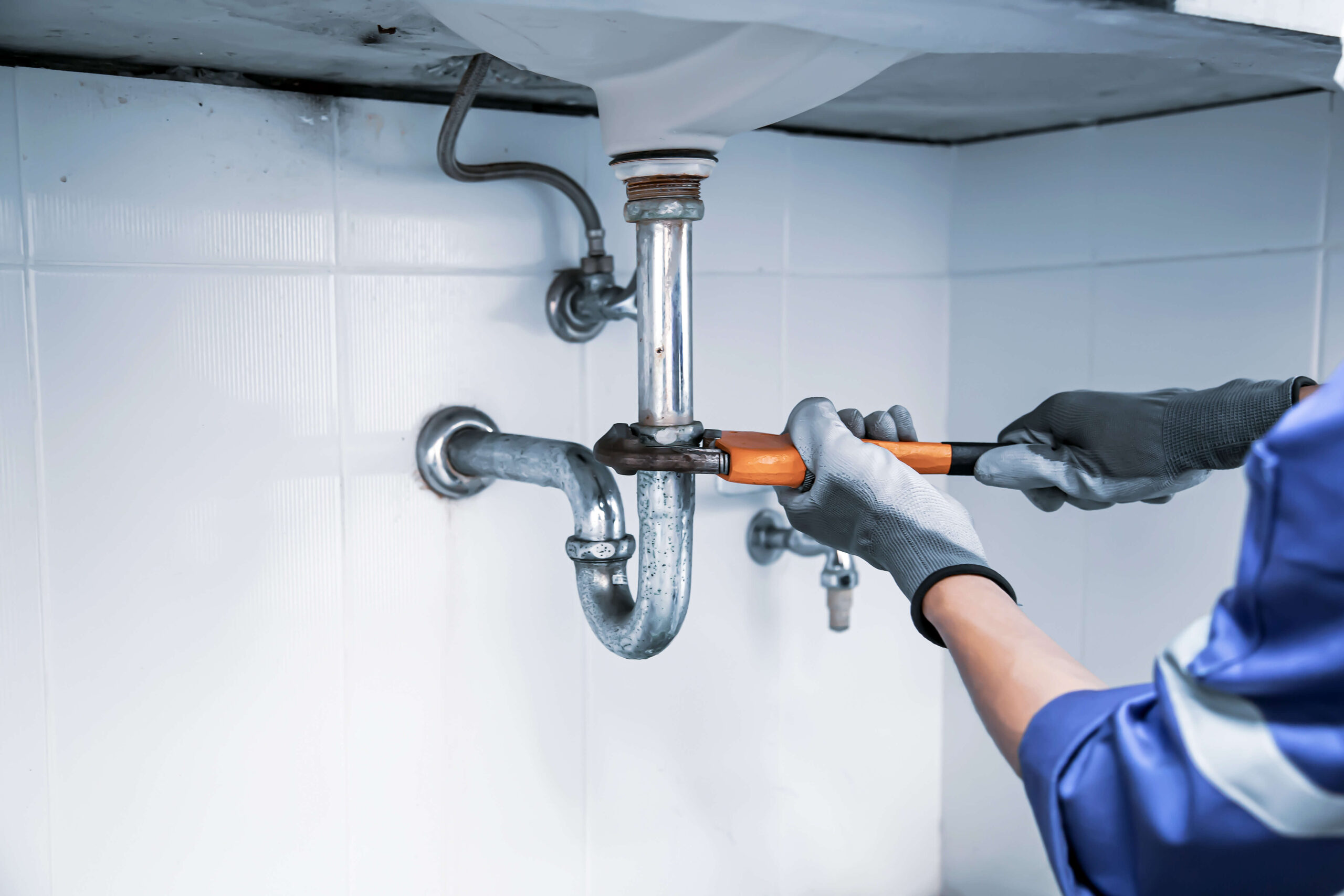There are few things more frustrating than a stubborn leak or clogged drain. These plumbing problems can cause damage to your home and lead to costly repairs if not addressed quickly.
A plumber with good communication skills can distinguish between an unpleasant experience and a successful resolution to your plumbing issues. Click https://www.plungerplumberllc.com/ to learn more.

Clogged drains are one of the most common plumbing problems that homeowners face. They can be caused by many different things, leading to several issues, including water backups and sewer line back-ups. Clogged drains can be prevented with a regular maintenance program that includes frequent use of a plunger and occasional snaking of the drain line.
Hair: Everyone sheds some hair, and some of it inevitably ends up in the sinks and shower drains. It can also build up in toilets, leading to a clog or overflow. Using a simple hair strainer or catcher can help to reduce this problem, as can making sure to clean the trap regularly.
Grease: Cooking grease tends to stick to the walls of pipes and combine with other debris to create tough clogs. This can happen in kitchen sinks, bathroom drains, and showers. To prevent this, it’s best to pour used cooking grease into a can or jar for disposal rather than down the drain.
Foreign Objects: Toilets are the most likely place for foreign objects to end up in your drain lines, but they can occur anywhere. These objects range from cotton balls, baby wipes, and sanitary items to toys, food scraps, and other small household items. Most of these can be flushed away, but some may need professional assistance to break down or dissolve.
Another common cause of clogged drains is hard water. This type of water has high levels of minerals that can build up in drain lines and prevent them from flowing properly. Getting a water softener installed in your home can help with this issue. If you notice that your drains are becoming increasingly slow or clogged, it’s important to address the issue as quickly as possible. This can save you money on a potential drain cleaning service and prevent the need for expensive pipe repairs down the road. If you’re unsure of the source of your clog, it can be helpful to call in a plumber with access to advanced clog detection tools.
The running water and sanitary sewer systems in our homes are major advancements that make modern living possible, but when these pipes develop leaks or burst, it can cause significant damage to walls, flooring, cabinetry, and more. In addition, leaking pipes can lead to mold growth that threatens the health of household residents. While some leaking pipes require the assistance of a professional plumber to repair, many can be temporarily fixed by homeowners.
Leaking pipes can be caused by a variety of issues, from the use of unsuitable materials during pipe installation to the natural shifting and settling of your home. If the pipes are old, they can also be subject to corrosion, with rust causing cracks that allow water to escape.
Pipes are often concealed behind walls and out of sight, so identifying a leak can be difficult. However, if your water bill has increased without any change in your usage habits or your neighbors’ bills have gone up, you may have a leaking pipe. You can try to find the source of the leak by turning off your water and looking for wet spots in your home.
You can help prevent leaking pipes by taking steps such as using drain strainers, properly disposing of grease and other oily waste, and scheduling regular plumbing inspections. In the event of a leak, you should turn off your water and place a bucket or other container under the affected area to contain the water and minimize damage.
If you are having trouble with your plumbing system, it is always a good idea to contact us for a professional consultation and service. Our experienced plumbers can identify and fix the issue quickly, so you can get back to your normal routine. We can also help you prevent future problems by educating you on the most common causes of plumbing failures and providing tips for maintaining your plumbing system. As the famous historical figure John Bunyan once said, “one leak will sink a ship.” By knowing the signs of a failing plumbing system and acting fast, you can avoid serious problems down the road.
Sewage backups are a nightmare for homeowners, as they can cause extensive and expensive damage to the home. It’s also a health hazard for the household members, as sewage contains bacteria that can cause serious illness. Sewer backups can be caused by a number of issues, including blockages or broken lines. The good news is that there are many steps that homeowners can take to help prevent them.
Individual drain clogs can sometimes be caused by foreign objects like hair, grease or soap scum that get trapped in the pipes and don’t degrade over time. The more common issue, however, is when the entire main sewer line becomes clogged. If this happens, multiple areas of the home will experience plumbing issues at once. This problem is much more serious and cannot be fixed with a plunger or bottle of drain cleaner.
The main sewer line carries all of the wastewater from your home to your septic tank or public city connection. Because of this, it’s important to only flush toilet paper and human waste down the drains inside your home. Other items, such as grease, wipes and coffee grounds, can cause the drains to clog and lead to a sewer backup.
Another common cause of a sewer backup is when tree roots infiltrate the sewer line. As the roots grow, they can wrap around the pipes and cause them to crack or break. This can create a hole that allows the sewage to back up into your home.
It’s also important to keep in mind that if the city’s sewer system is experiencing a problem, it can cause sewage to back up into your home as well. Although this is not a homeowner’s fault, it is still an unpleasant situation to deal with.
Keeping up with regular maintenance and inspections of your sewer line can help prevent problems. A professional can inspect the line and identify any issues before they become a costly emergency. In addition, avoiding pouring cooking grease down the drains and only flushing toilet paper and human waste can also help to prevent a sewer backup.
Water damage is not only unsightly and damaging to property, but it can also be dangerous. It allows mold and mildew to grow, which can lead to health problems like allergies and respiratory issues. It can cause stains on walls and floors, warped or buckled flooring, and softened or sagging drywall. It can also leave behind musty odors.
While it is not always possible to prevent water damage, there are some things you can do to minimize your risk. For example, if you suspect that you have a leaky pipe, it is important to act quickly. Leaking pipes can lead to serious water damage in a short amount of time, and it is best to address the issue before it worsens.
Another thing you can do to reduce your risk of water damage is to have regular inspections done on your plumbing system. This will help you catch any small problems before they become bigger ones. A plumber will be able to check for potential problems, such as a clogged drain or leaking pipe, and fix them before they get out of hand.
Water damage can be caused by a variety of things, including natural disasters, flooding, and burst pipes. However, it is most often caused by plumbing issues. Leaking or broken pipes, as well as malfunctioning appliances like water heaters and washing machines, can lead to major damage in a short amount of time.
Water damage can be expensive and stressful to repair, and it can affect the quality of life in a home or office. In addition to causing physical damage, it can also lead to loss of productivity and reputation. Customers and clients may be deterred from visiting a business that is damaged by water, which can lead to financial strain. Homeowners and businesses can prevent costly repairs and loss of revenue by having their plumbing systems regularly inspected and maintained. In addition, they can take steps to ensure that emergency shut-off valves are located in easily accessible areas and are working properly. Also, it is important to educate employees and tenants about the importance of maintaining water-resistant building materials in high-risk areas.





